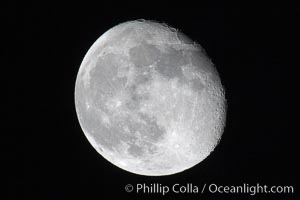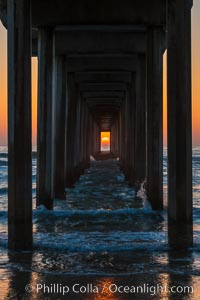
Scripps Pier solstice, sunset aligned perfectly with the pier.
Location: Scripps Institution of Oceanography, La Jolla, California
Image ID: 28475
Location: Scripps Institution of Oceanography, La Jolla, California
Image ID: 28475
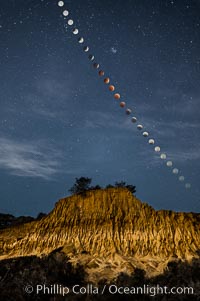
Lunar Eclipse Sequence Over Broken Hill, Torrey Pines State Reserve. While the moon lies in the full shadow of the earth (umbra) it receives only faint, red-tinged light refracted through the Earth's atmosphere. As the moon passes into the penumbra it receives increasing amounts of direct sunlight, eventually leaving the shadow of the Earth altogether. October 8, 2014.
Location: Torrey Pines State Reserve, San Diego, California
Image ID: 29412
Location: Torrey Pines State Reserve, San Diego, California
Image ID: 29412
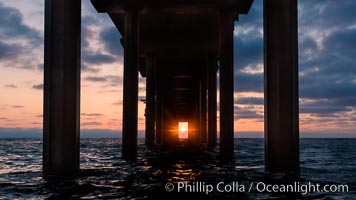
Scripps Pier solstice, surfer's view from among the waves, sunset aligned perfectly with the pier. Research pier at Scripps Institution of Oceanography SIO, sunset.
Location: Scripps Institution of Oceanography, La Jolla, California
Image ID: 30150
Location: Scripps Institution of Oceanography, La Jolla, California
Image ID: 30150
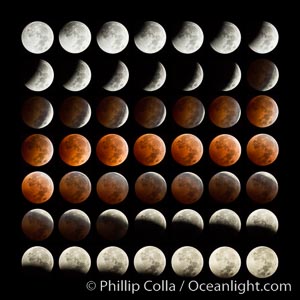
Lunar eclipse sequence. While the moon lies in the full shadow of the earth (umbra) it receives only faint, red-tinged light refracted through the Earth's atmosphere. As the moon passes into the penumbra it receives increasing amounts of direct sunlight, eventually leaving the shadow of the Earth altogether. October 8, 2014.
Image ID: 29411
Panorama dimensions: 8000 x 8000
Image ID: 29411
Panorama dimensions: 8000 x 8000

Belt of Venus and Earth Shadow at Dawn. The Belt of Venus is actually alpenglow visible near the horizon during twilight, above the antisolar point. Like alpenglow, the backscatter of reddened sunlight also creates the Belt of Venus. Unlike alpenglow, the sunlight scattered by fine particulates that cause the rosy arch of the Belt shines high in the atmosphere and lasts for a while after sunset or before sunrise.
Location: La Jolla, California
Image ID: 37476
Location: La Jolla, California
Image ID: 37476
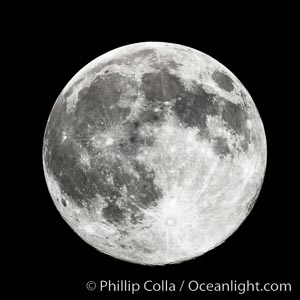
The Moon. Full Moon.
Location: Earth Orbit, Solar System, Milky Way Galaxy, The Universe
Image ID: 26047
Location: Earth Orbit, Solar System, Milky Way Galaxy, The Universe
Image ID: 26047
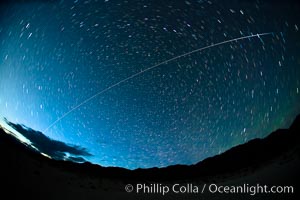
International Space Station flys over Death Valley shortly after sunset.
Location: Earth Orbit, Solar System, Milky Way Galaxy, The Universe
Image ID: 25247
Location: Earth Orbit, Solar System, Milky Way Galaxy, The Universe
Image ID: 25247

Lunar eclipse sequence, showing total eclipse (left) through full moon (right). While the moon lies in the full shadow of the earth (umbra) it receives only faint, red-tinged light refracted through the Earth's atmosphere. As the moon passes into the penumbra it receives increasing amounts of direct sunlight, eventually leaving the shadow of the Earth altogether. August 28, 2007.
Location: Earth Orbit, Solar System, Milky Way Galaxy, The Universe
Image ID: 19391
Panorama dimensions: 1826 x 14162
Location: Earth Orbit, Solar System, Milky Way Galaxy, The Universe
Image ID: 19391
Panorama dimensions: 1826 x 14162
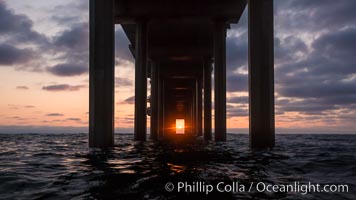
Scripps Pier solstice, surfer's view from among the waves, sunset aligned perfectly with the pier. Research pier at Scripps Institution of Oceanography SIO, sunset.
Location: Scripps Institution of Oceanography, La Jolla, California
Image ID: 30151
Location: Scripps Institution of Oceanography, La Jolla, California
Image ID: 30151
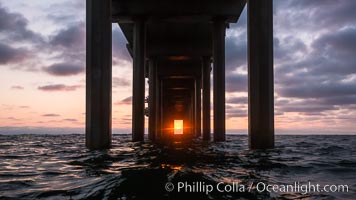
Scripps Pier solstice, surfer's view from among the waves, sunset aligned perfectly with the pier. Research pier at Scripps Institution of Oceanography SIO, sunset.
Location: Scripps Institution of Oceanography, La Jolla, California
Image ID: 30152
Location: Scripps Institution of Oceanography, La Jolla, California
Image ID: 30152
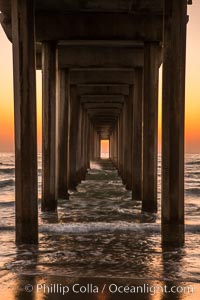
Scripps Pier solstice, sunset aligned perfectly with the pier.
Location: Scripps Institution of Oceanography, La Jolla, California
Image ID: 28476
Location: Scripps Institution of Oceanography, La Jolla, California
Image ID: 28476
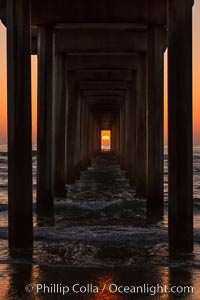
Scripps Pier solstice, sunset aligned perfectly with the pier.
Location: Scripps Institution of Oceanography, La Jolla, California
Image ID: 28474
Location: Scripps Institution of Oceanography, La Jolla, California
Image ID: 28474
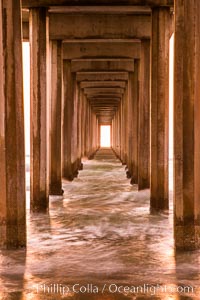
Scripps Pier solstice, sunset aligned perfectly with the pier.
Location: Scripps Institution of Oceanography, La Jolla, California
Image ID: 28477
Location: Scripps Institution of Oceanography, La Jolla, California
Image ID: 28477
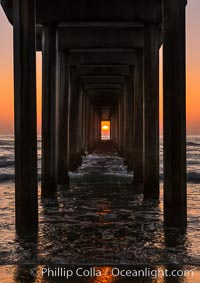
Scripps Pier solstice, sunset aligned perfectly with the pier.
Location: Scripps Institution of Oceanography, La Jolla, California
Image ID: 28478
Location: Scripps Institution of Oceanography, La Jolla, California
Image ID: 28478

Lunar eclipse sequence, showing total eclipse (left) through full moon (right). While the moon lies in the full shadow of the earth (umbra) it receives only faint, red-tinged light refracted through the Earth's atmosphere. As the moon passes into the penumbra it receives increasing amounts of direct sunlight, eventually leaving the shadow of the Earth altogether. August 28, 2007.
Location: Earth Orbit, Solar System, Milky Way Galaxy, The Universe
Image ID: 19392
Panorama dimensions: 1835 x 6442
Location: Earth Orbit, Solar System, Milky Way Galaxy, The Universe
Image ID: 19392
Panorama dimensions: 1835 x 6442
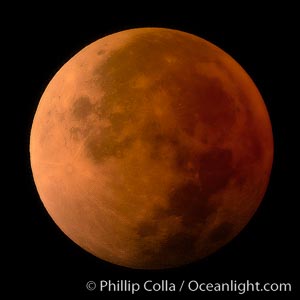
Blood red moon. During total eclipse the moon lies in the full shadow of the earth (umbra) and receives only faint, red-tinged light -- sunlight which is refracted through the thin layer of smoke- and haze-filled air that is Earth's atmosphere. August 28, 2007.
Location: Earth Orbit, Solar System, Milky Way Galaxy, The Universe
Image ID: 19450
Location: Earth Orbit, Solar System, Milky Way Galaxy, The Universe
Image ID: 19450
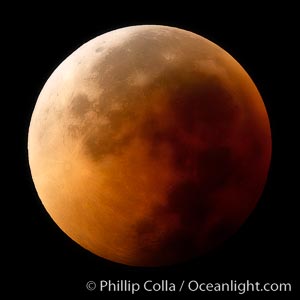
Blood red moon. During total eclipse the moon lies in the full shadow of the earth (umbra) and receives only faint, red-tinged light -- sunlight which is refracted through the thin layer of smoke- and haze-filled air that is Earth's atmosphere. August 28, 2007.
Location: Earth Orbit, Solar System, Milky Way Galaxy, The Universe
Image ID: 19451
Location: Earth Orbit, Solar System, Milky Way Galaxy, The Universe
Image ID: 19451
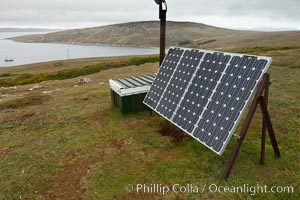
Solar electric panels, used to generate electricity on remote Westpoint Island in the Falklands.
Location: Westpoint Island, Falkland Islands, United Kingdom
Image ID: 23955
Location: Westpoint Island, Falkland Islands, United Kingdom
Image ID: 23955
